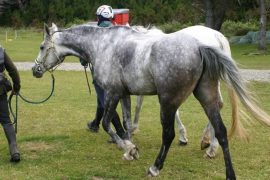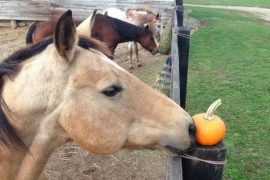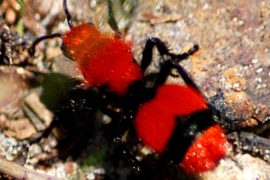The turtle opened its beak.
The turtle moved to the side of the road.
The turtles’ toenails slipped in the dust.
The turtle kept on moving forward.
How Turtles Get Their Shells
A Japanese research team is able to explain for the first time how the bony shield on the reptile’s back is formed. Contrary to what was previously assumed, it does not form from bones that lie within the skin. Rather, the decisive impulse comes from the ribs.
The turtle’s body plan is mysterious and very different from that of other vertebrates. For a long time, scientists assumed that the shell of the animals is formed in a similar way to that of crocodiles. A mistake, as it turned out: the rib bones already emit chemical substances during development in the egg, which cause the surrounding structures to ossify and form an armor. Since the ribs are thus enclosed in the carapace, they grow on the animal’s back and do not migrate under the shoulder blades as in all other vertebrates. The Japanese researchers led by Hiroshi Nagashima from the Center for Developmental Biology in Kobe report on their work in the journal “Science”.
In order to understand the evolution of the turtle shell, the scientists compared embryos of the Chinese softshell turtle Pelodiscus sinensis with those of chickens and mice. In turtles as well as in other animals, the embryonic development shows a kind of fast-forward evolution and provides information about the individual stages.
Initially, the development of all three animals was similar, the scientists explain. However, when the ribs overlap the shoulder blades, a fold forms along the torso in turtles. This fold is a barrier that keeps the ribs from growing around the trunk to form a rib cage. The rib bones remain limited to the animals’ backs and ensure that the armor develops. As a result of these processes, the tortoise’s shoulder blades remain under and are covered by the ribs. The fold that formed at the beginning of this development later also separates the legs from the carapace in the fully developed animals.
Ribs as signal transmitters
In fact, it seems to be the ribs themselves that give the signal for the formation of the carapace. They grow into the region where the carapace will later form, and there they give signals for the ossification of existing structures, the scientists write.
Until now, researchers have assumed that turtle shells develop in a similar way to crocodiles, for example. In these, bones that lie within the skin form the armor. In the ancestors of the tortoises, the bony shells, so-called osteoderms, enlarged and finally united to form large plates, was the previous assumption.
How did the turtle defend itself against the red ant?
It crushed the ant between its body and legs.
What are the problems that affect the survival of turtles?
These threats include coastal development, pollution, direct harvest, invasive species and vessel strikes. With the encroachment of hotels, parking lots and housing along nesting beaches, female turtles are forced to use suboptimal nesting habitats.
How do turtles protect themselves from their enemies?
A primary defensive tactic for many turtles is to simply withdraw into their shell. Some species, like box turtles (Terrapene carolina) have evolved hinges that allow the shell to close completely, encapsulating the reptile safely inside.
What do you think is the biggest danger facing sea turtles?
Incidental capture by fishing gear is the greatest threat to most sea turtles, especially endangered loggerheads, greens, and leatherbacks. This threat is increasing as fishing activity expands.
Why can’t you touch turtles?
This can mean enormous stress for the animal. They can sense your touch and don’t like being fondled. Turtles are reptiles, so they sometimes need to go to the surface to breathe.
What are the peculiarities of the turtle?
Like all reptiles, they have four different color receptors and can therefore also perceive infrared and ultraviolet radiation. Turtles are also very good at smelling. Aquatic turtles perceive scents through chewing-pumping movements of the lower jaw and throat.
What sounds do turtles make?
The noise sounds like the croaking of a small frog or like a crunch/scratch.
How can you describe a turtle?
Name: turtle
Latin name: Testudinata
Class: reptiles
Size: 15 – 250cm
Weight: 100g – 800kg
Age: up to 200 years
Appearance: dark green, brown, black
Sexual Dimorphism: Yes
Diet Type: Omnivore
Diet: Vegetable and carnal foods
Distribution: worldwide
original provenance: unknown
Sleep-wake cycle: diurnal
Habitat: river, sea, ocean
natural enemies: alligators, sharks, crocodiles
Sexual maturity: between 5 – 20 years
Mating season: species specific
Incubation period: 60 – 120 days
Clutch size: up to 200 eggs (depending on species)
Social behavior: partly group-forming
Critically Endangered: No
How do the turtles live?
She has to go into hibernation in autumn in good time. There are about 356 species of turtles on earth today. Most of them live in fresh water—that is, in lakes, ponds, streams, and rivers (or in zoo enclosures, like these red-eared sliders). Seven species live in the sea, around 50 species only on land.
Who eats turtle
Enemies: Despite their shell, turtles have some enemies. In the warm, tropical areas these are alligators, sharks or crocodiles. Crabs and seabirds also target the newly hatched juveniles. Because the armor of the little ones is not that hard.
What don’t turtles like?
Turtles either sleep underwater, in their shells on land, or hidden in burrows. But you can’t really get that from sleep. Turtles rest rather than sleep.





